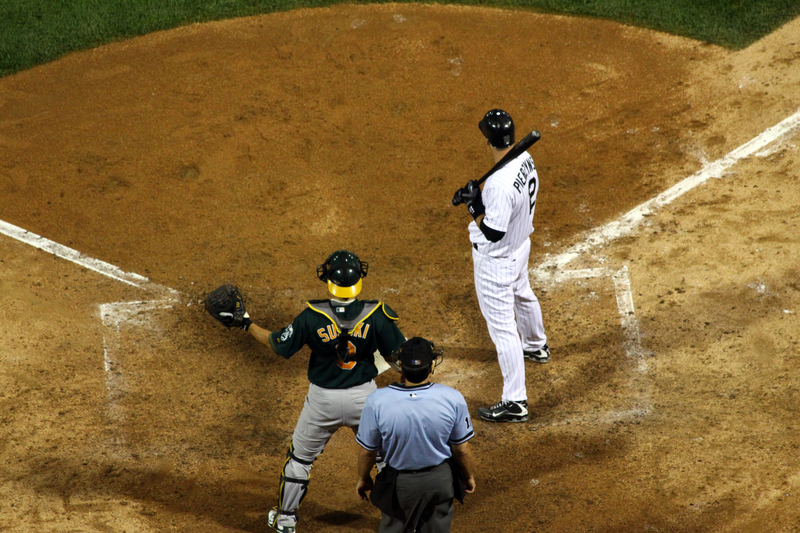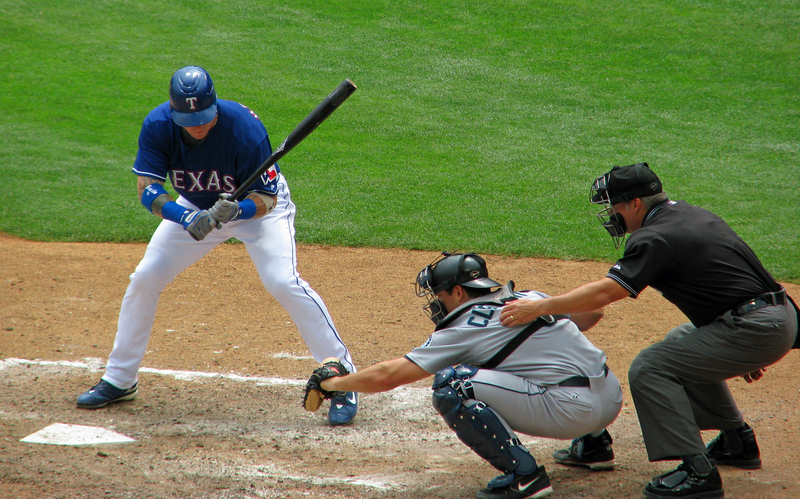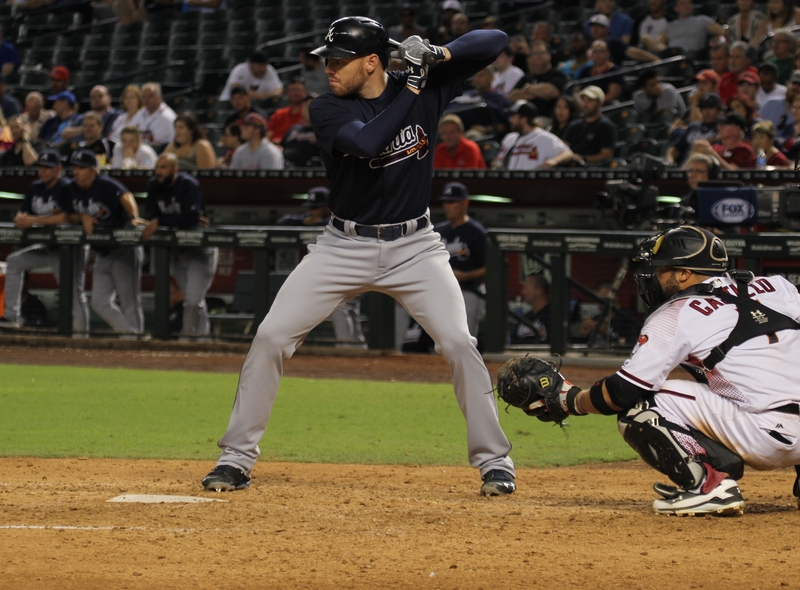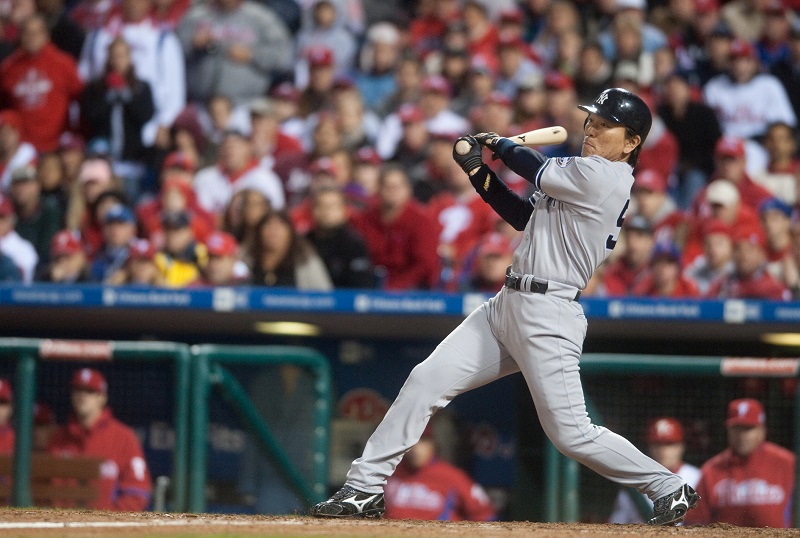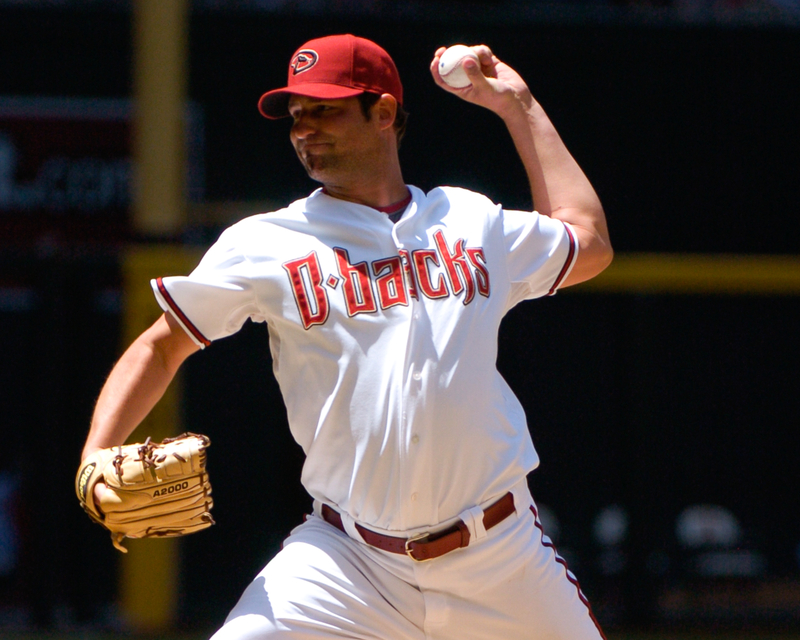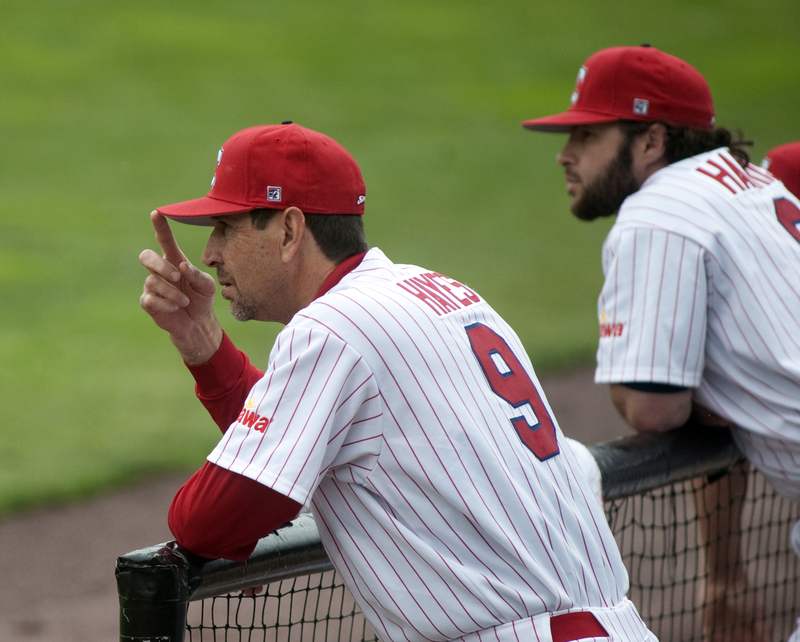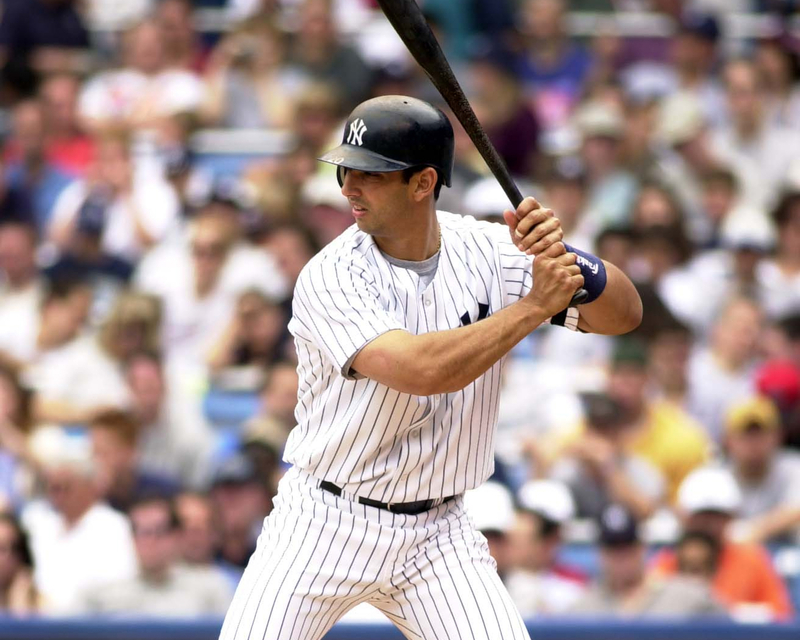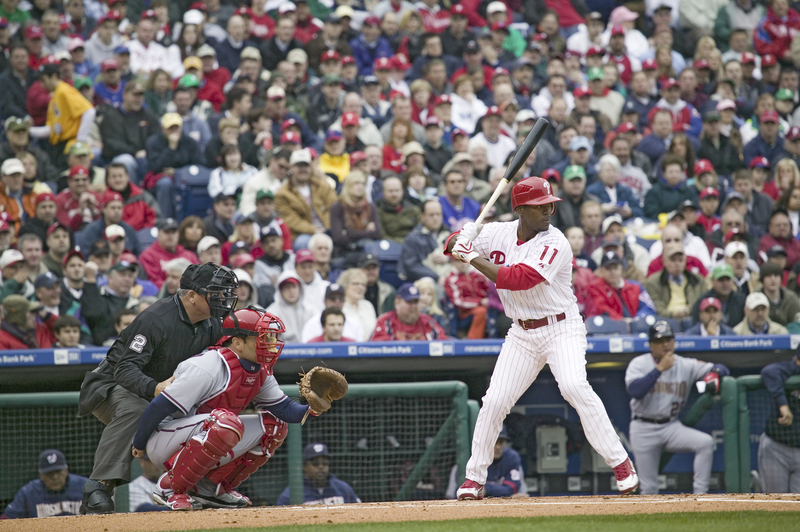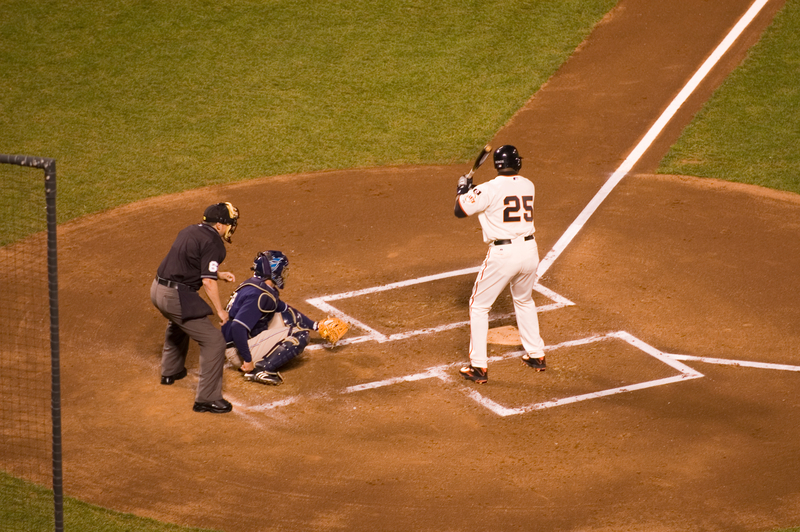Last updated on October 26th, 2023 at 09:03 am
An intentional walk during a baseball game occurs when the other team automatically gives a hitter first base freely during their plate appearance. Before 2017, baseball pitchers had to throw four pitches out of the strike zone with the catcher standing at home plate, signaling to throw it away from the hitter in a lob toss. After the rule change in 2017, the manager can now signal to the umpire for the intentional walk play, which means no pitches are thrown to the hitter, and the hitter goes directly to first base.
So, what is the difference between a walk and an intentional walk in baseball? When and why did the new intentional walk rule change in MLB? Do intentional walks help a player’s OBP and OPS state metric? Who has the most intentional walks in their baseball career?
Here is the complete breakdown of intentional walks in baseball.
What is the Difference Between a Walk and an Intentional Walk?
The difference between a walk and an intentional walk in baseball is the pitcher’s intent. For example, a pitcher might walk a hitter because they threw too many balls outside the strike zone during the at-bat. At a minimum, the pitcher had to throw at least four balls during this unintentional walk, but chances are they threw more if there were strikes during the at-bat.
Today, an intentional walk in baseball does not require any pitches from the pitcher. When the manager signals to the home plate umpire that they want to put that hitter on base automatically, the hitter goes first without any pitches. Before 2017, the catcher had to stand up and receive a lob toss in the opposite batter’s box to signal the intentional walk away from the hitter.
When Did the New Intentional Walk Rule Change?
The intentional walk rule change in baseball changed during the 2017 season by MLB commissioner Rob Manfred. The new rule removed the four pitches for an intentional walk to speed up the pace of play. The manager from the dugout signals to the home plate umpire that they are giving up first base, and the hitter automatically goes to first base.
The idea behind the rule change was that throwing four intentional balls was unnecessary and boring to watch, so the new rule was put into effect to improve the pace of play. No longer does the pitcher throw international balls via an intentional walk, which in theory will speed up the gameplay.
Could a Hitter Swing at an Intentional Walk Scenario?
Before the rule change in 2017, hitters could swing at an intentional walk scenario. Most chose not to swing because the pitcher would purposely throw the ball way outside the strike zone, making it hard to hit.
However, in 2013, Miguel Cabrera of the Florida Marlins hit an intentional pitch for a single. The intentional pitch was slow and more towards the middle of the plate, so he swung. His swing at this pitch caught everyone by surprise and is one of the things baseball fans won’t see again with the rule change in 2017 removing this chance from happening.
What Made the Previous Intentional Walk Interesting before 2017?
While rare, pitchers sometimes would mess up an intentional walk, making this enjoyable during a game when their error would occur. For example, a pitcher might not set and stop before lobbing the ball over to the opposite batter’s box, which would lead to a balk. Other times, the pitcher might throw a wild pitch because they are familiar with throwing 90 MPH to a catcher, so lobbing a ball 40 MPH to them might cause that to happen.
How Do MLB Scorebooks Keep Track of Intentional Walks?
A free pass via an intentional walk goes into the scorebook as IBB. IBB stands for an intentional base on balls, which is different from BB. BB stands for a base on balls, which occurs when a hitter gets to first base during their at-bat via a standard walk that was not on purpose.
Why Do Baseball Teams opt for an Intentional Walk?
Teams opt for an intentional walk during a game for a few reasons. For instance, some hitters have a high chance of hitting home runs when they come to bat. To limit the number of runs the hitter could drive in for their team, the pitching team might elect to walk the batter intentionally and try their luck with the next hitter.
Another reason to walk a batter intentionally is to set up a double-play situation. For example, there might be a runner on second base with one out in the ninth inning. The pitcher might intentionally walk the hitter by putting two runners on base to create a force out on a grounder at third, second, or first base. The thought process is that if they can get the next hitter to ground out into their defensive team alignment, they could turn two outs via a double play and get out of the ninth inning.
Third, some pitchers look at specific matchups and decide to walk a hitter intentionally. For instance, a lefty pitcher might intentionally walk a righty to go after the lefty batter on deck. This chess match play is standard late in the game with middle relief pitchers, and the game is close in score. Pitchers look at the most favorable matchups and try and play to their strengths, so walking a different hitter is an intelligent play.
Is There a Max Limit to the Number of Intentional Walks in Baseball?
There is no limit to the number of intentional walks a specific hitter or team can get during a baseball game. That means that one or more hitters can intentionally walk via every plate appearance in a game if the other team wants. However, intentionally walking a hitter means putting that baserunner on base. The other team increases their scoring chances when a runner is already on base, so it is a tradeoff for both sides via risk and reward.
Can a Hitter Refuse an Intentional Walk?
A hitter can’t refuse an intentional walk during a game. For example, the New York Yankees are playing against the Los Angeles Dodgers during a game. If the Yankees want to walk a specific Dodger’s hitter intentionally, the Dodger hitter can’t refuse that during their plate appearance.
Do Walks Help a Hitter’s OBP and OPS?
While walking does not help or hurt a hitter’s batting average, it does count directly into OBP (on-base percentage) and OPS (on-base percentage + slugging percentage) numbers. Look no further than Barry Bonds in 2004, where he had 45 home runs that season, which might seem surprising since he had one season with over 70 a few years before that.
He (Barry Bonds) only had 45 home runs in 2004 due to walking a staggering 232 times out of 617 plate appearances, which means 38% of the time, he didn’t have a chance to swing at the plate at strikes. To calculate the value of Bonds walking and getting to the first base safely via walks, OBP and OPS were .609 and 1.422, respectively.
To explain both numbers further, Bonds reached safely 6 out of 10 times when he would come to bat from a combination of walking and or hitting in 2004. When Bonds would finally be able to hit, he had over 40 home runs with a batting average of .362.
What is the Record for the Most Intentional Walks in their Major League Baseball Career?
Barry Bonds holds the top record for most intentional walks in their career with 688 intentional walks. Barry Bonds was intentionally walked four times in a single game on May 1st, 2004, also a record. The game with four intentional walks was between the San Francisco Giants and the Florida Marlins, and Bonds played at an MVP level that season and later had a 1.422 OPS that season, his best.
With a career batting average of .298 and an OPS of 1.051, Bonds was one of the most feared hitters for any pitcher to face. With that being the case, Bonds walked 20% of the time (2,558) he came to bat out of his 12,606 plate appearances.
Conclusion: What is an Intentional Walk-in Baseball?
In summary, an intentional walk in baseball occurs when the pitcher automatically gives the first base to the hitter at the plate. Before 2017, pitchers had to throw four balls out of the strike zone with the catcher standing to signal this intent, but since the rule change, a simple signal from the manager to the umpire speeds up this predictable outcome.
Similar Posts:
What is a Utility Player in Baseball and Softball?
What is Sign Stealing in Baseball
What Does Lob Mean in Baseball and Softball?
What Does BB Mean in Baseball?
How Does Scoring Work in Softball?
What Does the K Mean in Baseball?
Pinch Runner in Baseball and Softball
What Does OPS Mean in Baseball?
Greg Kristan, owner of The Stadium Reviews, LLC and TM Blast, LLC, brings his extensive experience visiting over half of the MLB ballparks, along with numerous MLS, NHL, NBA, and NFL venues, to provide in-depth coverage on the bag policy, food options, and parking. He has also been interviewed about his experiences on several sports podcasts.

